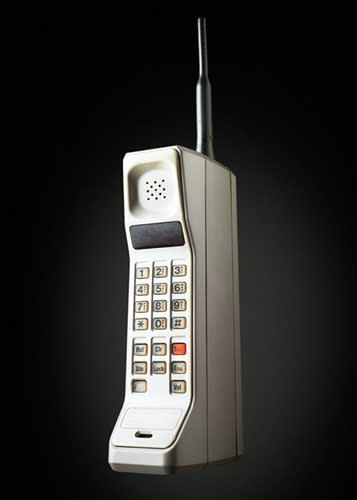 The Right Click
The Right Click40th anniversary of the first mobile phone call is cause for ‘cell-ebration’

It’s been 40 years since Martin Cooper, a senior engineer at Motorola, made the first mobile phone call. According to Gizmodo, Cooper called a rival at AT&T and said he was phoning “to see if my call sounds good at your end.”
Now, four decades later, smartphones are as commonplace as wrist watches (even more so, in many cases, as smartphone users just end up checking the time on their phone, anyway), and more people in the world have access to a cell phone than access to a toilet.
[ Related: How big is too big? Samsung’s new smartphone will reportedly feature 5.8-inch screen ]
Cooper’s first phone call was made on a Motorola DynaTAC, nicknamed the “brick” for its nearly two-and-a-half pound weight and massive size. It measured 9-inches tall, had 30 circuit boards, and 10 hours of charging it resulted in about 35 minutes of talk time.
Mike Short from the Institution of Engineering and Technology told The Guardian that the ten years that followed Cooper’s phone call were a very experimental time for the mobile phone industry, which is why the DynaTAC didn’t become commercially available until 1983.
Here’s a commercial for that very phone, with some astute predictions for the future of the cell phone industry:
“Since its first use 40 years ago, the mobile phone has completely changed our lives,” Short told The Guardian. “The first decade was a research or a ‘demonstrator’ phase, rapidly followed by analogue networks deployed over 10 years from the early 1980s based on carphones and used in business in the developed world.
“This soon led to the digital decade mainly between 1993 and 2003 when consumerism and globalization of mobile really took off.
“This led to a further adoption phase with the arrival of 3G and during 2003 to 2013 access to the Internet and the wider use of smartphones became a reality.”
[ More Right Click: Google Nose unveiling among the best tech April Fool’s Day jokes ]
As for where mobile phones will be headed in the near future, Short predicts that the world will continue to see cellular technology shrink and become more wearable.
“Wearable, in terms of (smartphone) watches, are coming. We’ll also see health measurement body vests that can communicate with your phone and then doctor,” Short told BBC.
Need to know what’s hot in tech? Follow @yrightclick on Twitter!

